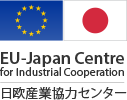

About the Report:
Since its entry into force on 1 February 2019, the EU-Japan Economic Partnership Agreement (EPA) has resulted in a significant increase of trade in goods and services between the EU and Japan . The Agreement gradually removes the vast majority of customs duties . It also addresses a number of long-standing non-tariff barriers and simplifies procedures for trade.
There are various EU products and services which potentially enjoy more trade benefits from the Agreement, but yet many EU exporters, particularly small and medium-sized enterprises (SMEs) perceive that it is difficult to export to Japan because of unfamiliar trade and business practices. This Guide presents in practical terms for key sectors the most important things that EU companies should know when exporting to Japan so that the benefits of free trade can become more widely available to EU exporters in the second year of the Agreement.
About the expert
Ms Chieko NAKABAYASHI has many years of institutional experience in the food sector at Japanese Government agencies and United Nations agencies. Click here to access her profile.
Picture: Tokyo from the top of SkyTree
Copyright: Creative Commons Attribution-Share Alike 4.0 International license
The EU-Japan Centre currently produces 5 newsletters :










Joint venture established in 1987 by the European Commission (DG GROW) and the Japanese Government (METI) for promoting all forms of industrial, trade and investment cooperation between the EU and Japan.
The EU-Japan Centre’s activities are subject to the allocation of a Grant Agreement by the European Commission for 2024-2026

